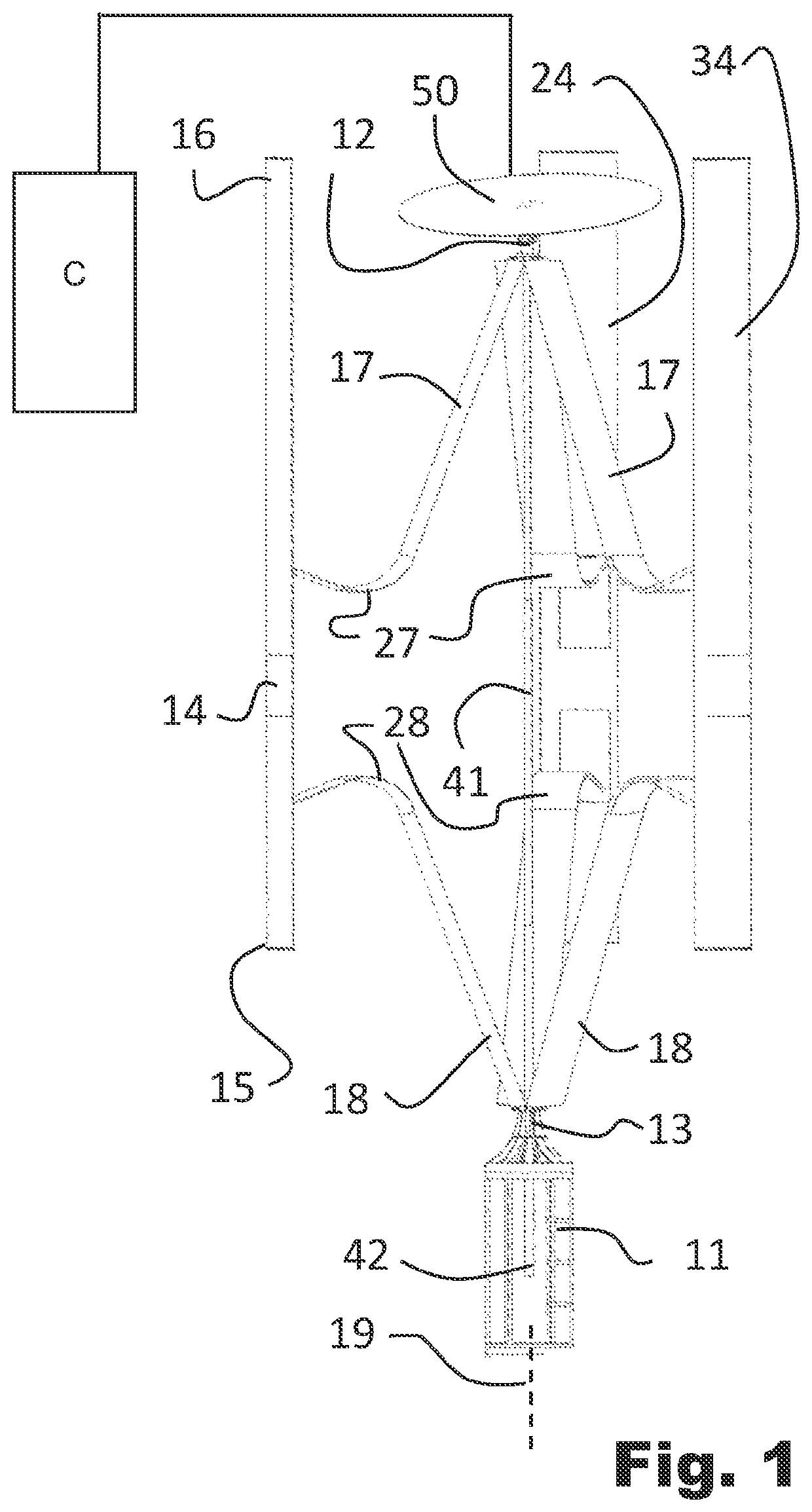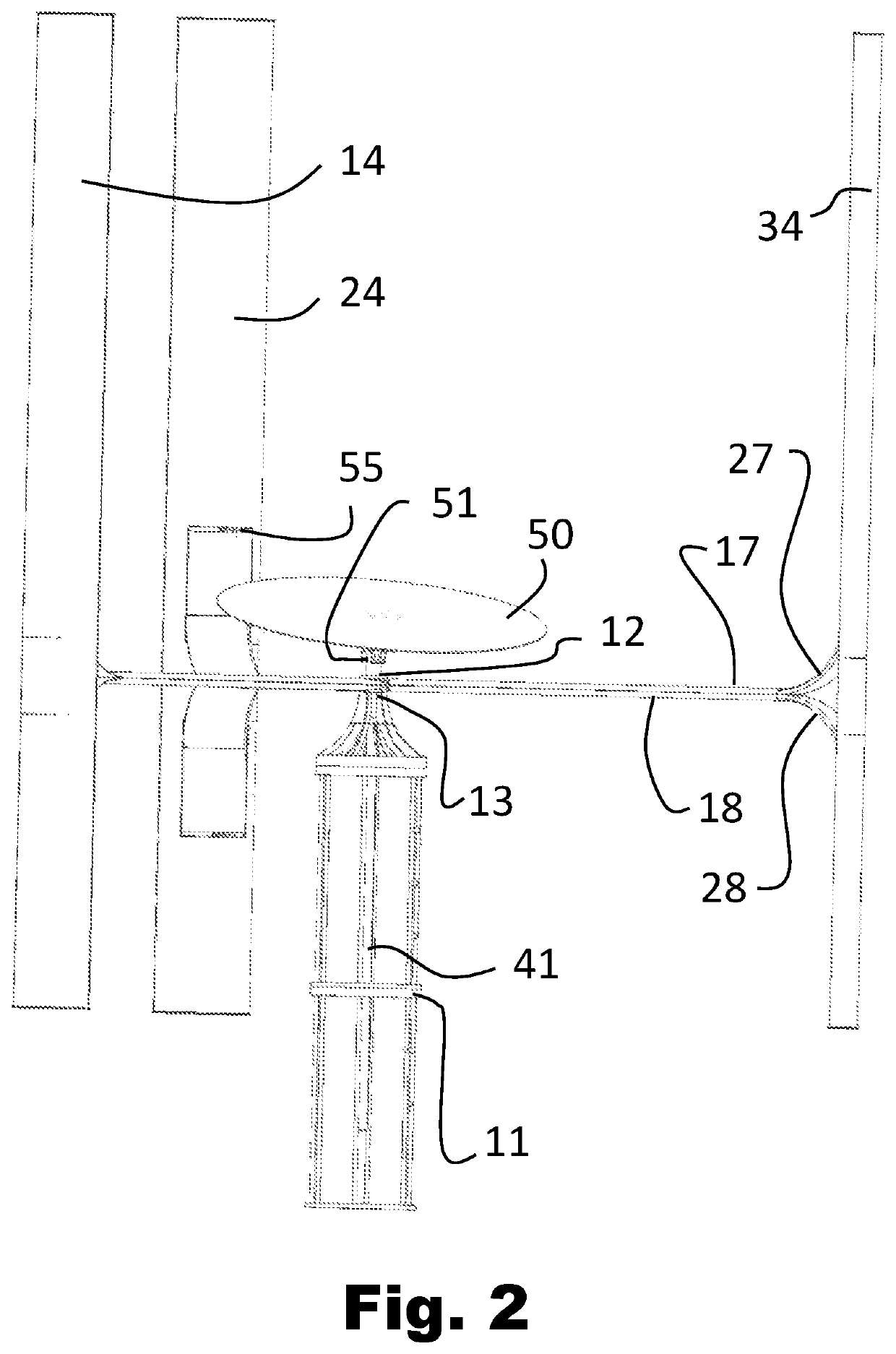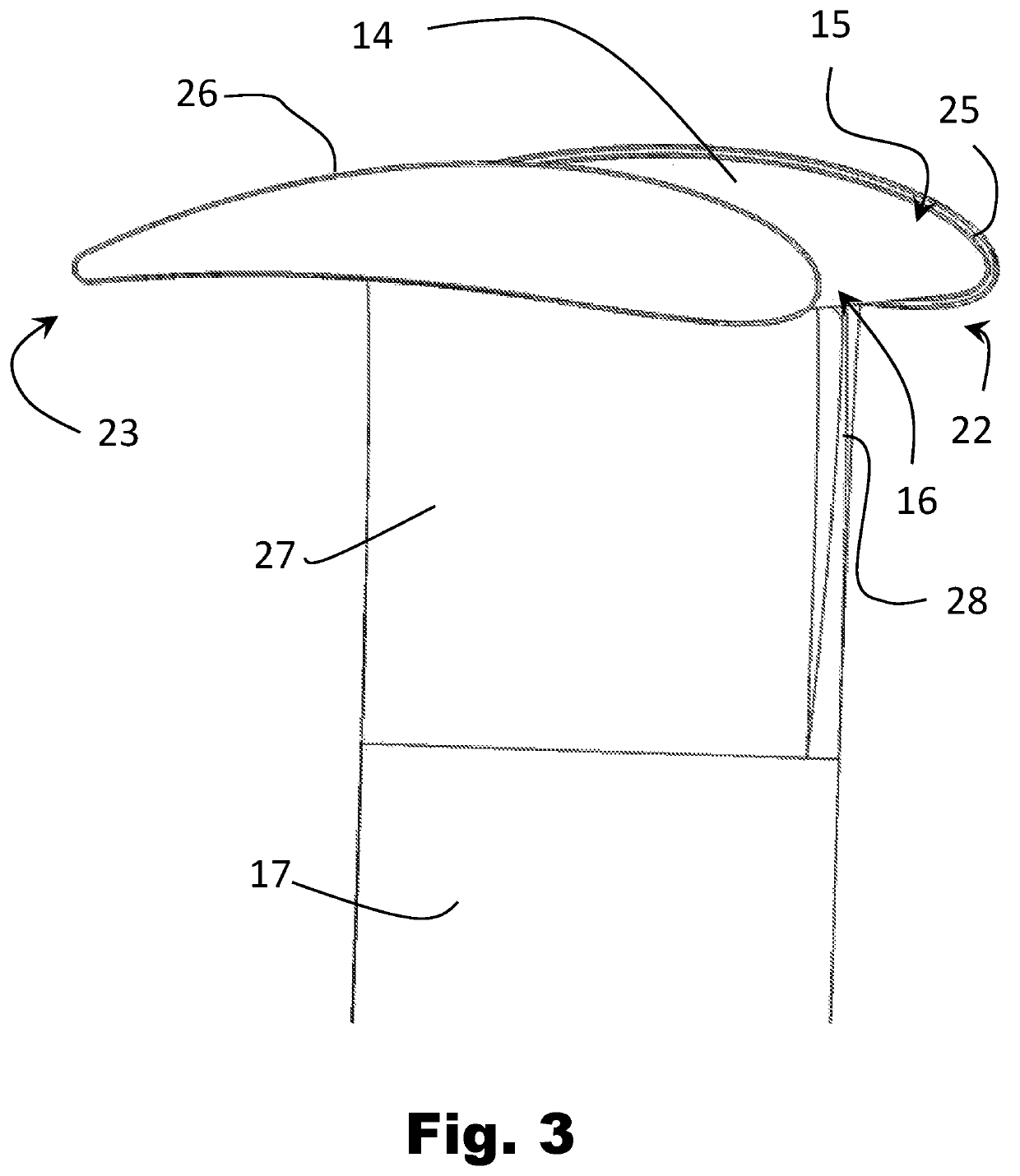Vertical axis wind turbine generator
a generator and vertical axis technology, applied in the direction of photovoltaic energy generation, motors, photovoltaic energy generation, etc., can solve the problems of delay in energy generation, prior art devices that do not protect blades and additional elements of the system, etc., and achieve the effect of protecting against high winds
- Summary
- Abstract
- Description
- Claims
- Application Information
AI Technical Summary
Benefits of technology
Problems solved by technology
Method used
Image
Examples
Embodiment Construction
[0040]The following describes in detail embodiments of the present disclosure. Examples of the embodiments are shown in the accompanying drawings, where reference signs that are the same or similar from beginning to end represent same or similar components or components that have same or similar functions.
[0041]FIG. 1 shows a side view of a turbine according to an embodiment of the invention in a semi-closed configuration. FIG. 2 shows the same turbine in an open configuration. It is noted that the solar panel 50 is positioned horizontally (as better seen in FIGS. 5 and 8), the view of FIG. 2 is slightly from above to better distinguish the solar panel 50.
[0042]The vertical axis wind turbine generator comprises a support stand 11 positioned on a ground. It is essentially vertically oriented which is shown with longitudinal axis 19 of the generator. A telescopic shaft 41 (also denoted herein as center shaft) having a first end and a second end extends along said axis 19.
[0043]In one ...
PUM
 Login to View More
Login to View More Abstract
Description
Claims
Application Information
 Login to View More
Login to View More - R&D
- Intellectual Property
- Life Sciences
- Materials
- Tech Scout
- Unparalleled Data Quality
- Higher Quality Content
- 60% Fewer Hallucinations
Browse by: Latest US Patents, China's latest patents, Technical Efficacy Thesaurus, Application Domain, Technology Topic, Popular Technical Reports.
© 2025 PatSnap. All rights reserved.Legal|Privacy policy|Modern Slavery Act Transparency Statement|Sitemap|About US| Contact US: help@patsnap.com



